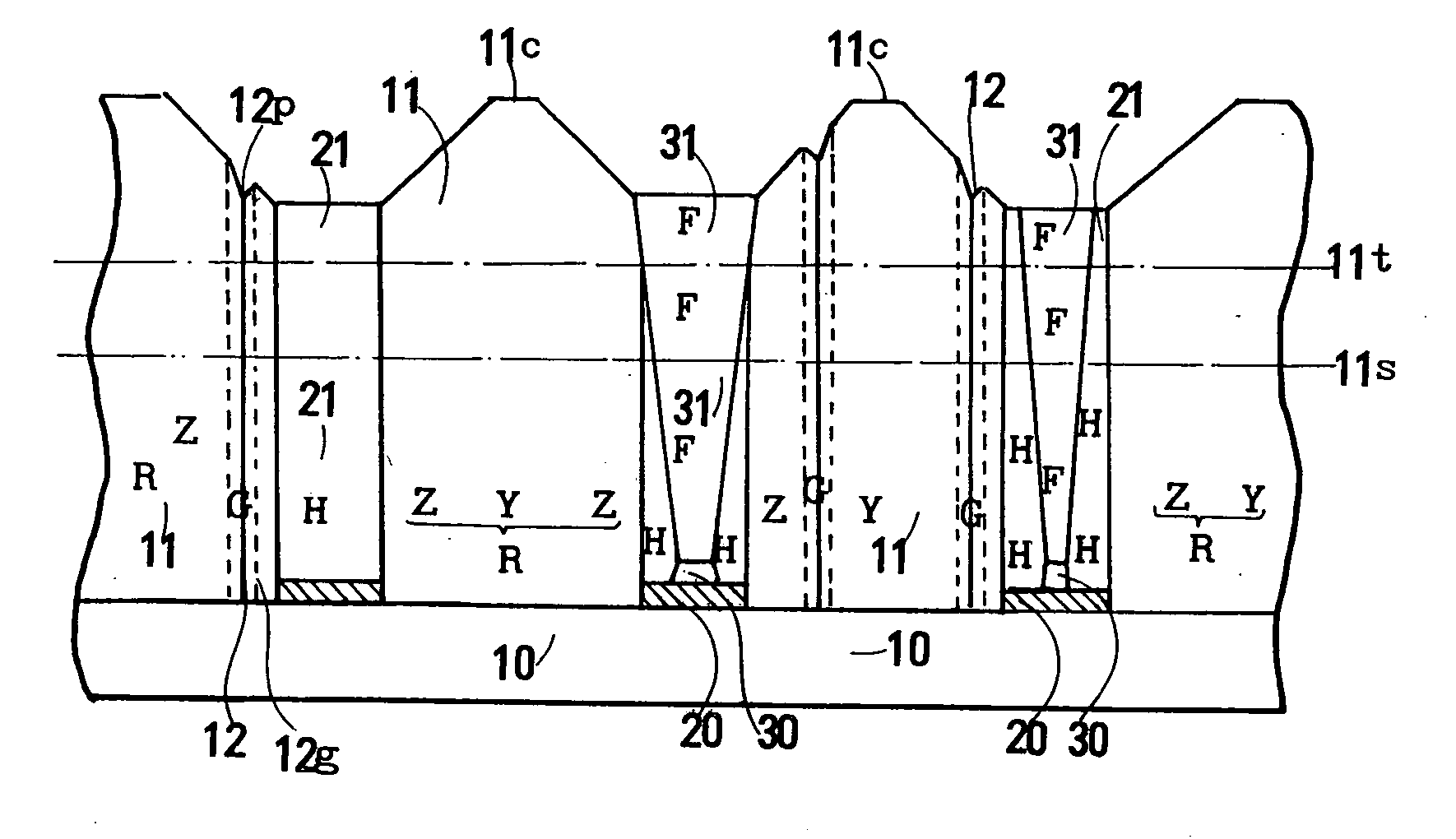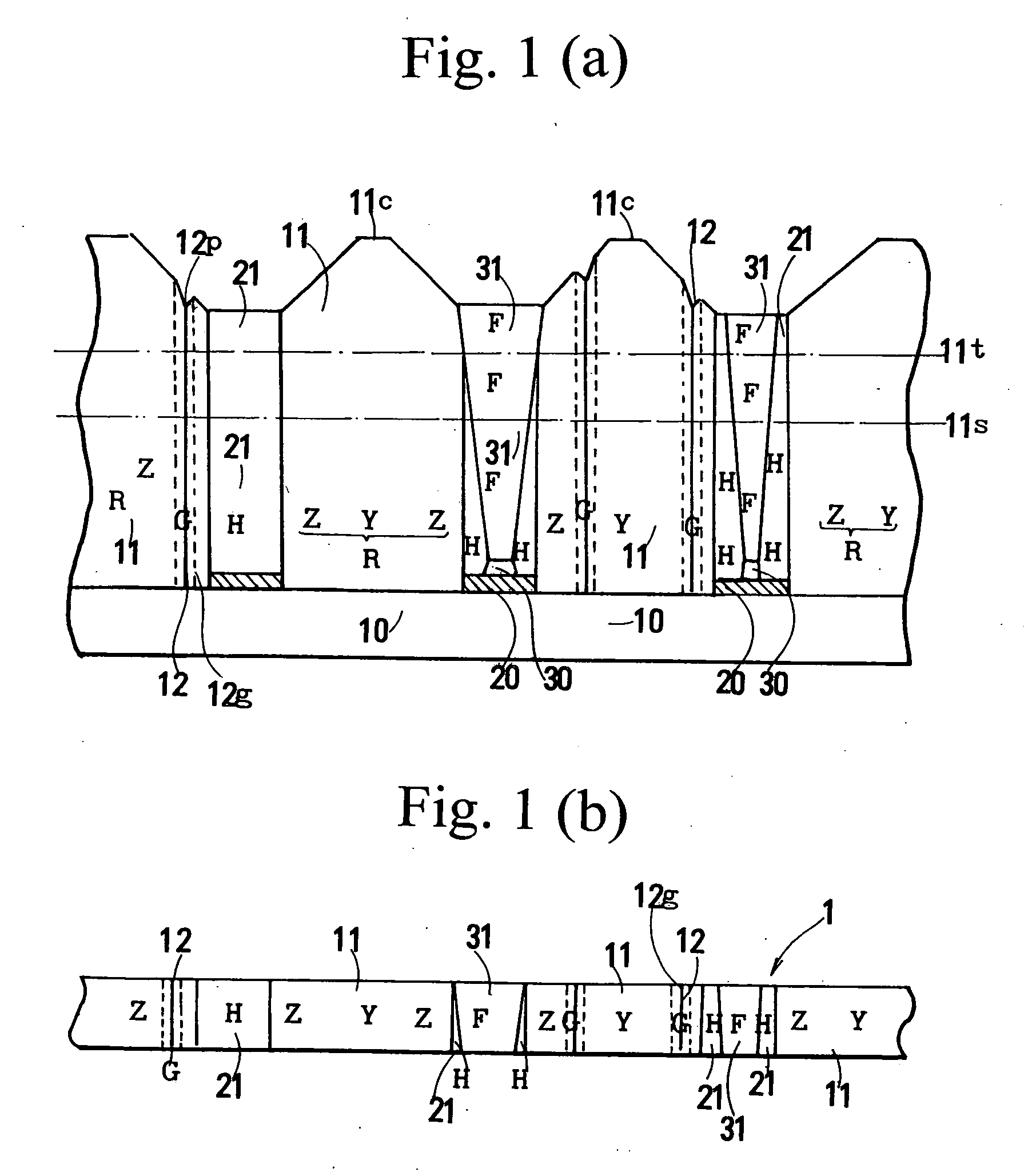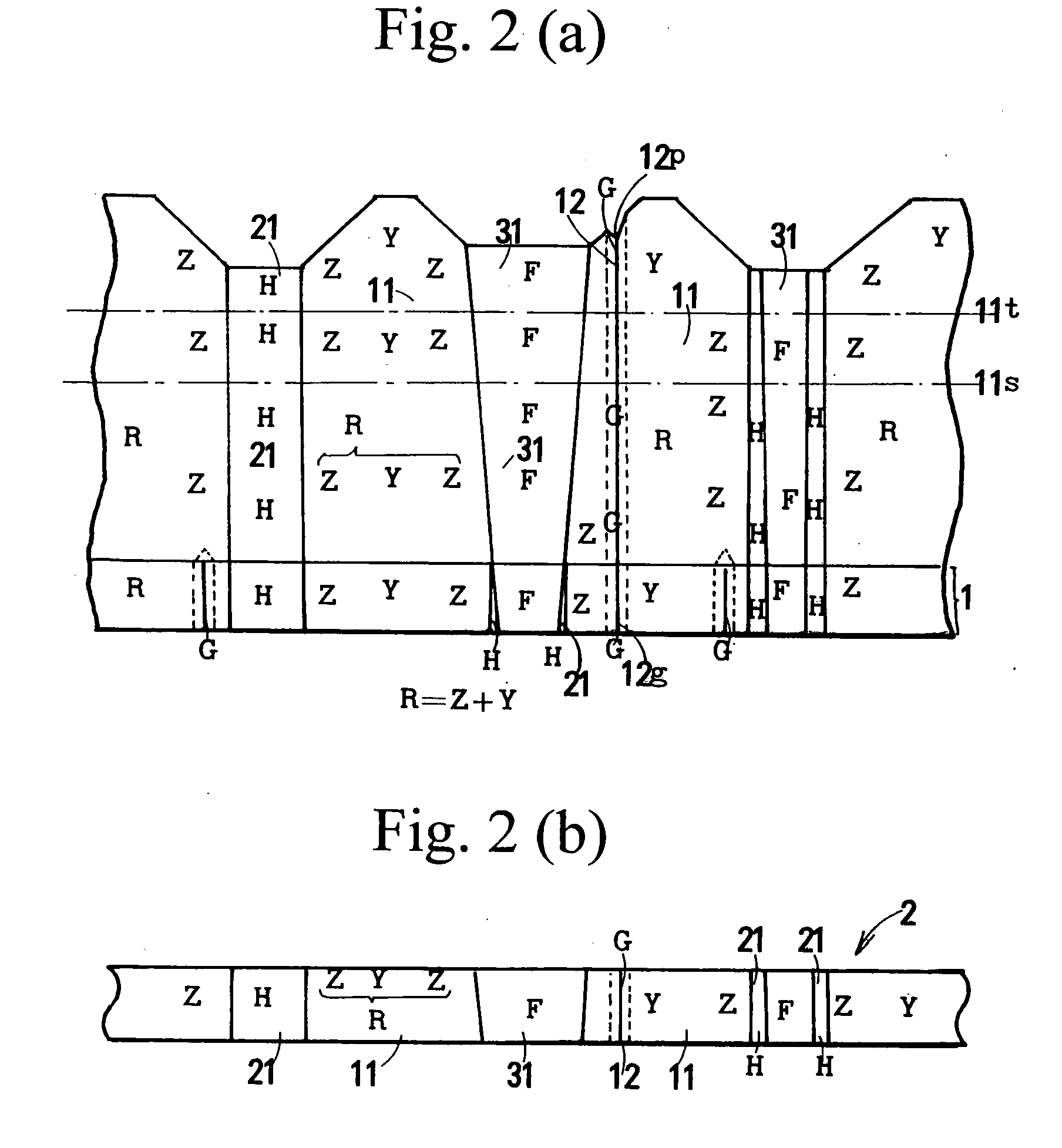Gallium nitride crystal substrate and method of producing same
a technology of gallium nitride and crystal substrate, which is applied in the direction of crystal growth process, polycrystalline material growth, chemically reactive gas growth process, etc., to achieve the effect of reducing dislocation, reducing bending (distortion) of gan wafer, and low distortion of gan wafer
- Summary
- Abstract
- Description
- Claims
- Application Information
AI Technical Summary
Benefits of technology
Problems solved by technology
Method used
Image
Examples
embodiment 1
[0055] An undersubstrate is a GaN / sapphire substrate prepared by growing epitaxially a 2 μm thick GaN layer by an MOCVD method on a 5.08 cm wide, 0.4 mm thick sapphire single crystal substrate. Sputtering and etching make a mask Pattern A of a silicon dioxide film (SiO2) on the GaN / sapphire undersubstrate. A GaN crystal is grown on the masked GaN / sapphire undersubstrate by an MOCVD method on a growing condition of a growing temperature of 1030° C., a TMG gas partial pressure of 2.53 Pa, an NH3 gas partial pressure of 5.07 kPa and a growth time of 50 hours.
[0056] The MOCVD growth makes a 0.2 mm thick GaN crystal. A 0.15 mm thick GaN wafer is cut from the grown crystal. The GaN wafer is observed by a fluorescence microscope. Existence of low dislocation single crystal regions (Z), C-plane growth regions (Y), voluminous defect accumulating regions (H), c-axis gross core regions (F) and random defect bundle regions (G) is confirmed by the fluorescence microscope observation. The GaN su...
embodiment 2
[0058] An undersubstrate is a sapphire single crystal substrate of a 5.08 cm diameter and a 0.4 mm thickness. A mask Pattern B (FIG. 4) of a silicon dioxide (SiO2) film is made on the sapphire undersubstrate by sputtering and etching. A GaN crystal is grown on the masked sapphire undersubstrate by an HVPE method on a growing condition of a growing temperature of 1050° C., a GaCl gas partial pressure of 3.04 kPa, an NH3 gas partial pressure of 35.5 kPa and a growth time of 20 hours.
[0059] The HVPE growth makes a 2.4 mm thick GaN crystal. A 0.45 mm thick GaN wafer is cut from the grown crystal. The GaN wafer is observed by a fluorescence microscope. Existence of low dislocation single crystal regions (Z), C-plane growth regions (Y), voluminous defect accumulating regions (H), c-axis gross core regions (F) and random defect bundle regions (G) is confirmed by the fluorescence microscope observation. The GaN substrate of Embodiment 2 has a 0.5 / cm2 density of the c-axis gross core region...
embodiment 3
[0061] Embodiment 3 GaN crystals are produced by a HVPE method on a condition similar to Embodiment 2 except the mask pattern. Embodiment 3 employs another mask of Pattern C (Stripe mask) as shown in FIG. 5 instead of Pattern B (FIG. 4) of Embodiment 2. The HVPE growth produces a 2.4 mm thick GaN crystal. A 0.45 mm thick GaN substrate is obtained by cutting the as-grown GaN crystal. Embodiment 3 GaN wafer includes low dislocation single crystal regions (Z), C-plane growth regions (Y), voluminous defect accumulating regions (H), c-axis gross core regions (F) and random defect bundle regions (G). The density of c-axis gross core regions (F) with diameters less than 1 mm (d2 in Embodiment 3. The density of random defect bundle regions (G) with diameters less than 500 μm (d2 in Embodiment 3. The curvature radius of the GaN wafer is 530 cm, which corresponds to small distortion. Table 1 denotes the results of Embodiment 3.
PUM
| Property | Measurement | Unit |
|---|---|---|
| partial pressure | aaaaa | aaaaa |
| partial pressure | aaaaa | aaaaa |
| angles | aaaaa | aaaaa |
Abstract
Description
Claims
Application Information
 Login to View More
Login to View More - R&D
- Intellectual Property
- Life Sciences
- Materials
- Tech Scout
- Unparalleled Data Quality
- Higher Quality Content
- 60% Fewer Hallucinations
Browse by: Latest US Patents, China's latest patents, Technical Efficacy Thesaurus, Application Domain, Technology Topic, Popular Technical Reports.
© 2025 PatSnap. All rights reserved.Legal|Privacy policy|Modern Slavery Act Transparency Statement|Sitemap|About US| Contact US: help@patsnap.com



